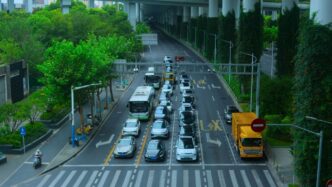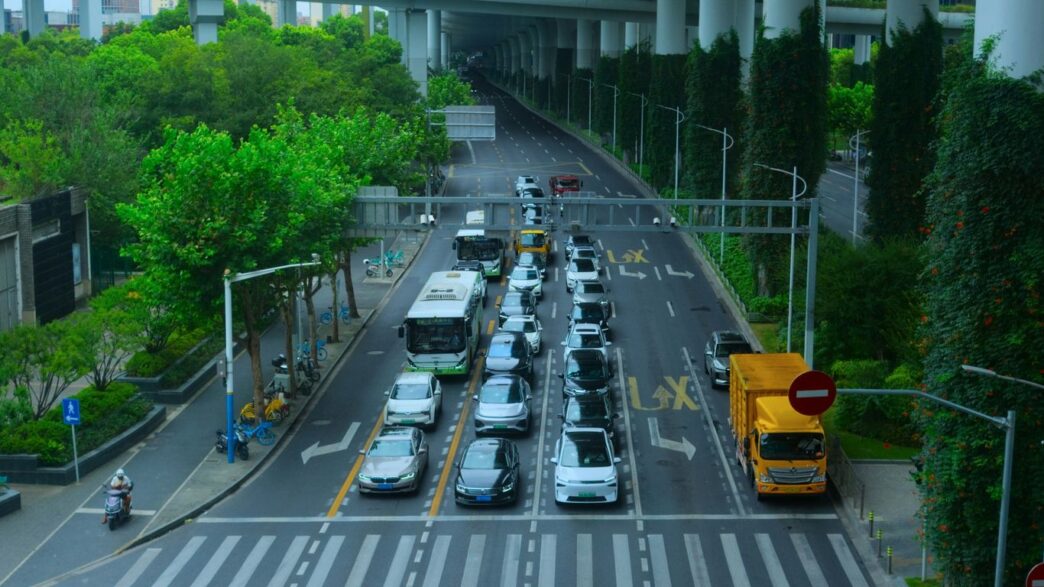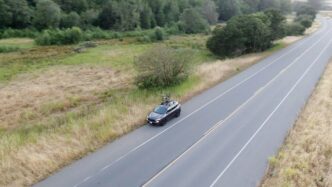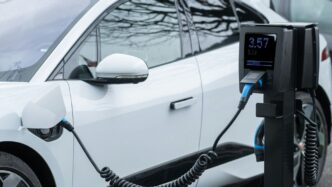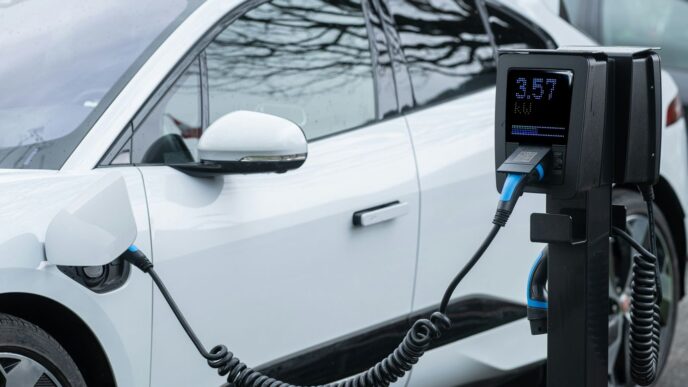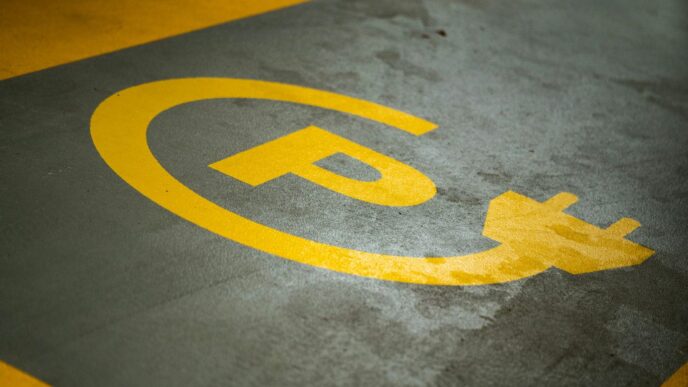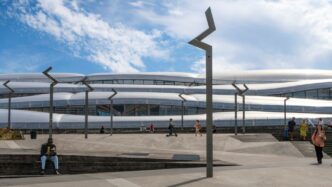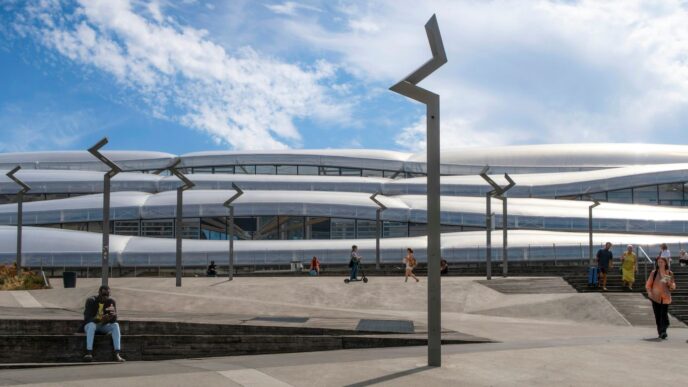Revolutionizing Urban Mobility with Intelligent Transport Solutions
Smart transport solutions are starting to change how people get around in cities, and it’s happening faster than most commuters imagine. The old days of frustrating gridlock, missed buses, and unclear delays are slowly being replaced by tech-driven upgrades that make daily travel smoother, safer, and way less stressful. Here’s where things are heading:
Leveraging AI, IoT, and Data Analytics for Smarter Cities
Rather than relying on gut feelings or outdated traffic counts, cities are tapping into a constant flow of real-time data. Sensors on roads, buses, and trains track everything from car speed to rider load, then send that info to data centers. AI steps in to spot patterns, predict busy times, and help planners make better decisions. The Internet of Things (IoT) means that not just vehicles, but traffic signals, crosswalk buttons, and even parking meters share information. Here are some concrete ways this is changing cities:
- AI predicts traffic jams and helps prevent them before they start.
- IoT sensors let control centers know if a bus is running late, so digital boards and apps can update riders instantly.
- Data analytics reveal which intersections or road segments are trouble spots, so fixes happen faster.
Enhancing Traffic Flow and Reducing Congestion
You know those intersections where it feels like the light lasts forever but hardly any cars move? Intelligent transport solutions act as an antidote. By using adaptive traffic signals and real-time monitoring tools, cities can fix issues as they arise, not hours or days later. Coordination between public transit, emergency services, and road users gets tighter, so fewer people get stuck. Here’s a snapshot:
| Factor | Traditional System | Intelligent System |
|---|---|---|
| Average Commute | 40 min | 28 min |
| Stoplight Waits | Often 2+ cycles | Usually 1 cycle |
| Unplanned Delays | 4/week | 1/week |
People are noticing shorter commutes and less stop-and-go, and that time difference really adds up over a year.
Improving Road Safety for All Users
Road safety used to mostly mean signs and maybe speed bumps, but digital solutions offer a lot more now. Intelligent systems keep tabs on accident hotspots, watch out for reckless driving, and send out alerts to drivers about hazards ahead. Cyclists and pedestrians benefit too:
- Crosswalk sensors give walkers more time based on real activity, not a set clock.
- Vehicle-to-infrastructure (V2X) tech warns cars when a cyclist is nearby, lowering crash risks.
- Emergency vehicles get green lights through corridors to respond faster.
In general, it’s getting harder for dangers to slip through the cracks. People on bikes, on foot, or behind a wheel are a little safer just by moving through a smarter city. Ultimately, it’s all about creating an urban environment that’s easier to move through, less stressful, and doesn’t put anyone at unnecessary risk.
Key Components of Intelligent Transport Systems
So, what exactly makes these transport systems so smart? It’s not magic, it’s a whole bunch of tech working together. Think of it as the eyes, ears, and brain of our city’s roads and transit. These systems are constantly watching, listening, and figuring out the best way to keep things moving smoothly.
At its core, an intelligent transport system (ITS) is built on a few main pillars. Without these, it’s just a bunch of disconnected gadgets. We’re talking about how we gather information, how we send it around super fast, how we make sense of it all, and then, what we actually do with that knowledge.
Real-Time Data Collection Through Sensors
This is where it all starts. We need to know what’s happening right now. Sensors are placed everywhere – in the road, on traffic lights, even on buses and cars. They’re collecting all sorts of info: how many cars are passing, how fast they’re going, if there’s a sudden stop, or even if the road surface is wet. It’s like having a million little reporters on the ground, sending back constant updates. This data is the raw material that makes everything else possible.
High-Speed Data Transmission with 5G and Edge Computing
Okay, so we’ve got all this data. What good is it if it takes ages to get where it needs to go? That’s where things like 5G come in. It’s super fast, letting information zip around almost instantly. And then there’s edge computing. Instead of sending everything back to a central brain far away, some of the processing happens closer to where the data is collected. This means quicker reactions, which is a big deal when you’re trying to manage traffic flow or warn a car about something up ahead.
AI-Powered Data Analysis for Predictive Insights
Just having data isn’t enough. We need to understand it. This is where Artificial Intelligence (AI) shines. AI algorithms can sift through mountains of data, spotting patterns that humans might miss. They can predict where traffic jams are likely to form before they happen, figure out the best timing for traffic lights, or even anticipate when a public transport vehicle might be running late. It’s about moving from just reacting to problems to actually predicting and preventing them.
Actionable Insights for Travelers and Planners
All this tech and data analysis ultimately needs to lead to something useful. For us regular folks, it means getting alerts on our phones about the fastest route, knowing exactly when the next bus is arriving, or being warned about a sudden hazard on the road. For city planners, it means having solid data to make smart decisions about where to build new roads, how to adjust public transport routes, or where to invest in infrastructure. It turns guesswork into informed strategy, making our cities work better for everyone.
Transforming Traffic Management with Smart Technology
Okay, so traffic management in cities has been a headache for ages, right? It feels like we’re always stuck in jams, especially during rush hour. But things are changing, and it’s pretty cool. We’re talking about using smart tech to actually make traffic flow better and keep things moving.
Adaptive Traffic Lights for Optimized Intersections
Remember those old traffic lights that just cycled through red, yellow, and green on a timer, no matter what? Yeah, those are pretty much dinosaurs now. The new systems are way smarter. They use sensors and cameras to see how many cars are actually waiting at an intersection. This means lights can change based on real-time traffic, not just a pre-set schedule. So, if one direction has a ton of cars and the other is empty, the light will stay green longer for the busy side. It’s all about making sure cars don’t just sit there waiting for no reason, which helps cut down on those frustrating stop-and-go situations.
Connected Vehicles for Enhanced Coordination
This is where things get really futuristic. We’re starting to see vehicles that can talk to each other and to the road infrastructure – they call it V2X, or Vehicle-to-Everything communication. Imagine cars warning each other about sudden stops or slippery patches on the road before the driver even sees it. Or think about how emergency vehicles could get a green light all the way through town because the traffic signals know they’re coming. It’s like a coordinated dance on the road, all managed by technology. This kind of communication can really help prevent accidents and keep traffic flowing smoothly by anticipating problems instead of just reacting to them.
Real-Time Route Updates and Hazard Detection
We’ve all used GPS apps to find the quickest way somewhere, but these systems are taking it up a notch. They’re not just looking at current traffic; they’re using all sorts of data to predict where jams might pop up. If there’s an accident, a sudden road closure, or even just a big event causing a crowd, your navigation app can reroute you almost instantly. Plus, these systems can detect hazards on the road, like potholes or debris, and alert drivers. It’s like having a co-pilot who knows everything happening on the road ahead, helping you avoid trouble and get where you need to go faster and safer.
Enhancing Public Transportation and Multimodal Integration
Public transport is getting a serious tech upgrade, and it’s about time. With more people living in cities than ever before, getting around efficiently and without adding to the pollution problem is a big deal. Smart cities are really leaning into technology to make buses, trains, and even bike shares work better together. The goal is to make using public transport as easy, if not easier, than driving your own car.
Smart Ticketing and Contactless Payment Systems
Remember fumbling for change or waiting in long lines to buy a ticket? Those days are fading fast. Smart ticketing systems are changing the game. Think tapping your phone or a smart card to pay your fare – it’s quick, it’s clean, and it cuts down on those annoying queues. This makes hopping on and off different modes of transport much smoother.
- Contactless Payments: Using your smartphone or a dedicated transit card for instant fare payment.
- Mobile Ticketing: Buying and storing tickets directly on your phone, accessible anytime.
- Integrated Fare Systems: A single payment method that works across buses, trains, trams, and sometimes even bike rentals.
Real-Time Public Transit Tracking and Prioritization
Nobody likes standing at a bus stop wondering when the next bus will actually show up. Real-time tracking, usually available through a city’s transit app or website, gives you live updates on vehicle locations and estimated arrival times. But it goes beyond just tracking. Smart systems can also give buses and trams priority at traffic lights. When a bus is running a few minutes behind, the traffic signals can be adjusted to give it a green light, helping it get back on schedule and making the whole system more reliable for everyone.
Seamless Connectivity Across Different Transport Modes
This is where things get really interesting. It’s not just about making individual transit options better; it’s about connecting them. Imagine planning a trip that involves a bus, a train, and maybe a short bike ride. Smart systems can help you plan that entire journey, showing you the best routes, transfer points, and even the real-time status of each leg. Mobility apps are becoming central hubs, allowing you to see all your options in one place and make transitions between different ways of getting around without a hitch. This kind of integration is key to encouraging more people to leave their cars at home.
The Role of Intelligent Transport Solutions in Sustainability
So, how does all this fancy tech actually help the planet? It turns out, making our commutes smarter also makes them greener. Intelligent Transport Systems (ITS) are a big deal for cutting down on pollution and making our cities better places to live. It’s not just about getting from A to B faster; it’s about doing it in a way that uses less fuel and creates less waste.
Reducing Fuel Consumption and Emissions
Think about sitting in traffic. Your engine is just idling, burning gas and pumping out fumes. ITS helps reduce this a lot. By optimizing traffic lights and giving drivers real-time route updates to avoid jams, we spend less time stuck and more time moving. This directly translates to less fuel burned. Plus, with better traffic flow, vehicles don’t have to accelerate and brake as much, which is also more fuel-efficient. Some systems even help coordinate vehicle movements, making them more efficient on the road.
Here’s a quick look at how ITS helps:
- Less Idling: Smart traffic management means fewer cars sitting still.
- Smoother Journeys: Optimized routes and traffic flow reduce stop-and-go driving.
- Efficient Driving: Coordinated vehicle movements and better speed management.
- Reduced Wear and Tear: Less harsh braking and acceleration means vehicles last longer.
Promoting Greener Travel Choices
ITS isn’t just about making car trips better; it’s also about making public transport and other eco-friendly options more appealing. When you can track buses in real-time, know exactly when they’ll arrive, and pay with a simple tap, taking the bus suddenly seems a lot less hassle. ITS can also help integrate different ways of getting around, like making it easy to switch from a train to a shared bike. This makes it simpler for people to choose options that are better for the environment over driving alone.
Creating Healthier and More Livable Cities
When we reduce traffic jams and emissions, everyone benefits. Less pollution in the air means healthier people. Quieter streets are more pleasant to live on. ITS contributes to this by making our urban environments less congested and cleaner. Imagine cities where the air is fresher and the streets are less noisy – that’s the kind of future ITS can help build. It’s about creating spaces where people can thrive, not just survive the daily commute.
Real-World Applications of Intelligent Transport Systems
Okay, so we’ve talked about what Intelligent Transport Systems (ITS) are and why they’re a big deal. But what does this actually look like on the ground? It’s not just theory; cities are already putting these ideas to work, and the results are pretty interesting.
Adaptive Signal Control in High-Volume Corridors
Think about those really busy roads, the ones where you spend ages at red lights even when there’s no cross-traffic. Cities are starting to use smart traffic lights that can actually change their timing based on how much traffic there is. Instead of a fixed schedule, these lights use sensors to see what’s happening in real-time. If one direction has a huge backup, the system can give it more green light time. Toronto, for example, has been using these adaptive systems in busy areas, and people have noticed less waiting and smoother driving.
Smart Bus Lanes for Transit Prioritization
Public transport is a big part of urban life, and ITS is helping make it better. In places like Seattle, they’ve set up smart bus lanes. These aren’t just painted lines; they work with traffic signals. When a bus is approaching an intersection, the system can give it a green light or extend the current one. This means buses get through traffic faster, which is good for everyone on the bus and can even help reduce overall traffic jams and pollution because buses move more efficiently.
Cooperative Intelligent Transport Systems for Safety
This is where things get really futuristic, but it’s happening now. Cooperative ITS, often called C-ITS, is all about vehicles talking to each other and to the road infrastructure. Imagine your car getting an alert that the car ahead of it just braked suddenly, or that there’s black ice on the road around the next bend. A pilot program in Europe has been testing this, and it’s showing real promise in cutting down on accidents. It’s like giving drivers a heads-up about dangers they can’t see yet, making roads a lot safer for everyone.
The Road Ahead: Smarter Cities, Smoother Journeys
So, we’ve looked at how intelligent transport systems are changing things. It’s pretty clear that using things like real-time data, smart traffic lights, and connected vehicles is making a big difference. Cities are becoming less congested, travel times are getting shorter, and honestly, just getting around feels a lot easier. It’s not just about cars either; these systems help public transport and even cyclists and pedestrians. As this technology keeps developing, we can expect even safer roads and more efficient ways to move people and goods. It really feels like we’re building cities that work better for everyone, making daily life a bit less stressful and a lot more connected.

